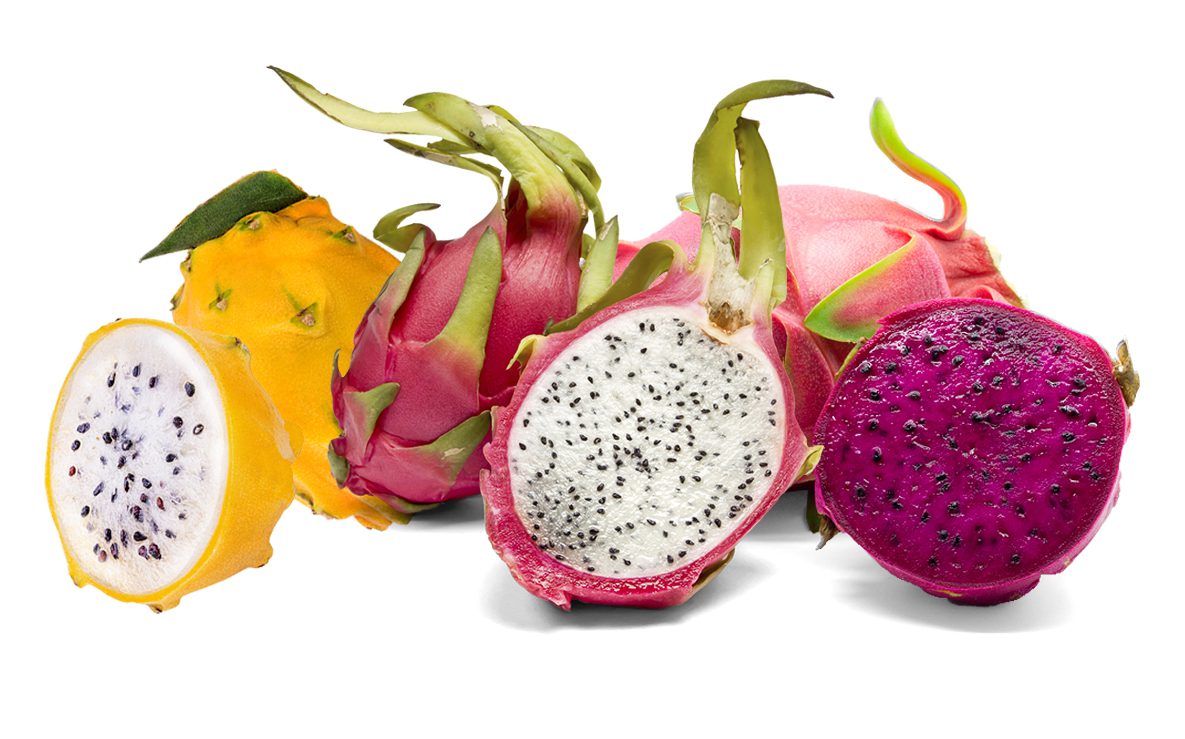
Dragon fruit, also known as pitaya or pitahaya, is a stunningly vibrant tropical fruit that’s not only visually striking but also packed with essential nutrients. From boosting your immune system to supporting skin health, this superfruit offers a host of health benefits.
In this blog, we’ll cover everything you need to know about dragon fruit—its origin, types, nutrition facts, benefits, and how to enjoy it in your diet.
🌍 Origin of Dragon Fruit
Dragon fruit originates from Central America but is now grown widely in tropical and subtropical regions around the world, especially in Vietnam, Thailand, India, and Mexico. It comes from the cactus species Hylocereus, which is why it thrives in dry, warm climates.
🍉 Types of Dragon Fruit

There are three main types of dragon fruit:
- White-fleshed Pitaya: Pink skin with white pulp and black seeds
- Red-fleshed Pitaya: Pink skin with red or magenta pulp
- Yellow Pitaya: Yellow skin with white pulp (sweeter and less acidic)
Each variety has a mildly sweet, kiwi-pear-like flavor and is rich in nutrients.
🧬 Nutritional Value (per 100g)
- Calories: 50–60
- Protein: 1.1g
- Fat: 0.1g
- Carbohydrates: 11g
- Fiber: 3g
- Vitamin C: 20–25% of RDI
- Iron: 8% of RDI
- Magnesium: 10% of RDI
- Antioxidants: Betalains, flavonoids, polyphenols
💪 Top Health Benefits of Dragon Fruit
1. Boosts Immunity
Rich in vitamin C and antioxidants, dragon fruit strengthens your immune system and helps fight off infections and free radicals.
2. Aids Digestion
High in fiber, this fruit supports healthy digestion and regular bowel movements, helping to prevent constipation and improve gut health.
3. Promotes Healthy Skin
The vitamin C and antioxidants in dragon fruit help protect the skin from damage, promote collagen production, and slow aging.
4. Supports Weight Loss
Low in calories and high in fiber, dragon fruit helps you feel full longer, making it a great snack for weight management.
5. Good for Heart Health
Dragon fruit contains monounsaturated fats (from its seeds) and antioxidants that may help reduce bad cholesterol (LDL) and improve heart function.
6. Regulates Blood Sugar
Some studies suggest that dragon fruit can help stabilize blood sugar levels, making it beneficial for people with pre-diabetes or Type 2 diabetes.
7. Hydrates and Detoxifies
With its high water content and electrolytes, dragon fruit helps keep the body hydrated and supports natural detoxification.
🍽️ How to Eat Dragon Fruit
Eating dragon fruit is simple:
- Cut the fruit in half.
- Scoop out the flesh using a spoon.
- Eat raw or add to smoothies, fruit salads, yogurt, or juices.
✅ Bonus Ideas:
- Blend it into a smoothie bowl
- Freeze it for a refreshing sorbet
- Combine with chia seeds for a dragon fruit pudding
⚠️ Precautions
Dragon fruit is generally safe for most people, but in rare cases, it may cause allergic reactions. Start with a small amount if you’re trying it for the first time.
🛒 How to Choose & Store Dragon Fruit
- Look for: Bright, even-colored skin with fresh green tips
- Avoid: Overly soft or bruised spots
- Storage:
- Keep at room temperature if not cut
- Once cut, store in an airtight container in the refrigerator and consume within 1–2 days
🌟 Final Thoughts
Dragon fruit isn’t just pretty on the outside—it’s a nutrient-rich superfood that offers a host of benefits for your health, skin, and digestion. Whether you’re looking to boost your immune system, improve gut health, or just enjoy a delicious, low-calorie snack, this exotic fruit deserves a spot in your diet.
So next time you’re at the grocery store, don’t walk past this vibrant gem—slice it, scoop it, and feel the benefits!





